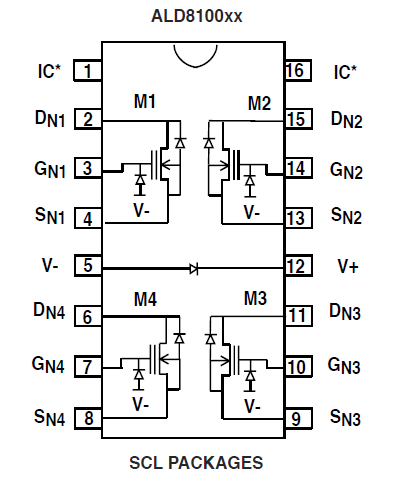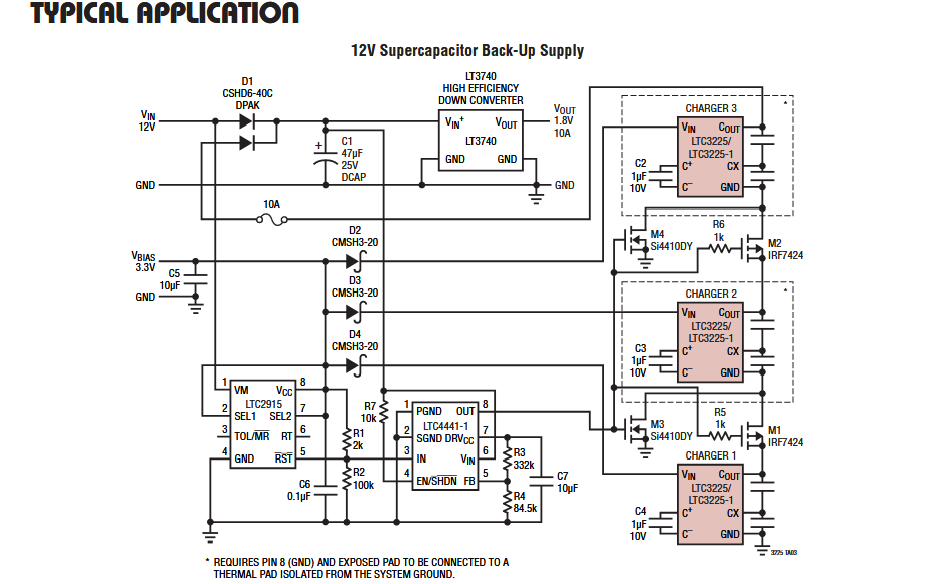Why to balance
In real-life situations there is some difficulty with obtaining high efficiency of the energy storage when using supercapacitors (especially of EDLC type), due to their low working voltage. Although EDLC capacitors can be discharged all the way to 0V, typical boost converters (with minimum input voltage not lower than - for example 0.8V) cannot access significant percent of stored energy. This problem is less evident when using hybrid supercapacitors that have minimum voltage, where discharging below this level can damage the part.
Obvious solution is the same that is used with battery cells (which usually also have low individual voltage) - connecting them in series. This approach works good for both single-use cells and rechargeable ones - with the difference that rechargeable cells are today usually installed with some type of battery management system (BMS) that is limiting the occurrence of some types of failures and extending battery life.
When stacking supercapcitors there are several different approaches:
- matching part parameters inside of battery - individual cells should behave in similar way both during charging, storage and discharge. When not properly matched, some cells could overcharge during charging process (which is limiting their lifetime), some could lose more of the charge than others during storage and finally those with least charge could be prematurely depleted and in consequence charged with negative voltage during discharge,
- protecting from polarity reversal - charging supercapacitor with negative voltage could be not always considered a catastrophic event (according to the Samxon documentation), but can be life-shortening and reducing capacity of the battery,
- balancing - where battery has additional circuits tasked with equalizing mean voltage across cells both during charge and storage. Balancing could be further divided into two categories:
- passive balancing - where balancing is obtained using passive (or - in other definition - linear) components,
- and active balancing - where cells are balanced using some active component (op-amp or voltage regulator- there are also approaches when excess energy from one cell is not removed as heat but transferred into other - undercharged - cells) - this approach usually gives better results but is more expensive and - as it needs to be powered - can limit storage capacity of the battery
Passive balancing methods
Resistor based
The most basic balancing method for supercapacitor batteries is using parallel resistors. When properly sized, they protect from different self-discharge levels during storage (when some cells could be prematurely depleted and possibly reverse-charged during discharge) and somewhat from different charge levels during charging (overcharged cells are discharged with bigger current, which can slowly balance the pack). To work properly, resistors should be sized to drain current several times (for example: 50x) bigger than worst-case leakage current of installed capacitors - so this approach can be not well suited for low-power, long discharge time installations.
(Zener) diode based
This balancing technique is designed to limit overcharging of cells - and, as a Zener diode works as a typical diode when forward-polarized, it is also preventing deep reverse-charging during discharge. As balancing circuit during charging process should react when overvoltage occurs and be dormant otherwise, overvoltage protection circuits work better than resistors when considering unwanted energy consumption. Low power of typical Zener diodes could limit usability of this method.
MOSFET based
This technique is similar to Zener diode - MOSFETs are selected/trimmed for specific threshold voltage, sometimes grouped in arrays and connected in parallel to the capacitors. Problematic can be slow current ramping - either MOSFET starts conducting well below maximum cell voltage (wasting supercapacitor charge) or conducts only limited current during overvoltage condition, lengthening time during which cell is overcharged.
One such example of MOSFET arrays are ICs from Advanced Linear Devices - for example ALD8100 family

consisting of matched arrays of MOSFETs with parameters tuned (and binned) for balancing supercapacitor arrays built with capacitors of different parameters.
Active balancing methods
Active balancing techniques involve active circuits that are either drawing current from overcharged cell (giving time for others to keep up) or even using charge pumps to transfer charge between cells. They are usually involve specialized IC's and can be expensive and power-consuming, but their parameters are usually far better than passive components.
Other approaches
There are other approaches to sidestep problem encountered with charging serial connected supercapacitor battery - for example, Analog Devices, in their datasheet for supercapacitor pair charger (LTC3225) proposes following circuit:

as can be seen, capacitor pairs are charged in parallel and when power supply voltage drops, they are (by using MOSFET switches) stacked on top of each other, forming serial connection that is providing 12V of backup power for the connected device.
Summary
Widely used balancing methods are usually low-power. For example - balancing resistors are are expected to have values of several kiloohms at least (giving working current in the range of milliampers), specialized MOSFET arrays are also dedicated to work at milliamper current range. Even dedicated MCU's - like Microchip Atmega406 that has array of dedicated cell balancing FET transistors - are usually expected to work with currents in range of milliampers (2mA in case of Atmega). This approach can be problematic with charging methods that maintain high current through whole charging process (constant current with voltage limiting for example) because individual cells could be subject to voltage variations corresponding with their parameters variance, but can be acceptable when charging current drops during charging process.

